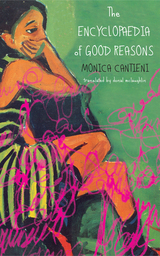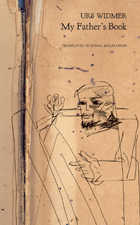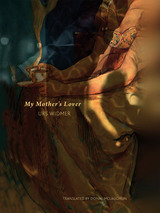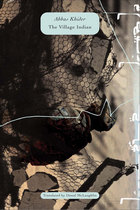7 books about McLaughlin, Donal

The Blue Soda Siphon
Urs Widmer
Seagull Books, 2014
A magnificent example of Widmer’s characteristic humor, literary genius, and unparalleled imagination.
In the wildly entertaining novel The Blue Soda Siphon, the narrator unexpectedly finds himself back in the world of his childhood: Switzerland in the 1940s. He returns to his childhood home to find his parents frantic because their son is missing. Then, in another switch, the young boy that he was back then turns up in the present of the early 1990s, during the Gulf War, where he meets himself as an older man, and meets his adult self’s young daughter. These head-scratching, hilarious time shifts happen when both the adult narrator and his childhood self go to the cinema and see films, the subjects of which echo their own lives.
Translated into English for the first time by Donal McLaughlin, this novel, in which the eponymous blue soda siphon bottle is a recurring symbol, is a magnificent example of Urs Widmer’s characteristic humor, literary genius, and unparalleled imagination.
In the wildly entertaining novel The Blue Soda Siphon, the narrator unexpectedly finds himself back in the world of his childhood: Switzerland in the 1940s. He returns to his childhood home to find his parents frantic because their son is missing. Then, in another switch, the young boy that he was back then turns up in the present of the early 1990s, during the Gulf War, where he meets himself as an older man, and meets his adult self’s young daughter. These head-scratching, hilarious time shifts happen when both the adult narrator and his childhood self go to the cinema and see films, the subjects of which echo their own lives.
Translated into English for the first time by Donal McLaughlin, this novel, in which the eponymous blue soda siphon bottle is a recurring symbol, is a magnificent example of Urs Widmer’s characteristic humor, literary genius, and unparalleled imagination.
[more]

The Encyclopaedia of Good Reasons
Monica Cantieni
Seagull Books, 2014
“My father bought me from the council for 365 francs,” recalls the narrator in Monica Cantieni’s novel The Encyclopaedia of Good Reasons. She’s a young girl, an immigrant to Switzerland whose adoption is yet to be finalized. When she finally moves into her new home with her new family, she recounts her days in the orphanage and how starkly different her life is now. Her new community speaks German, a language foreign to her, and she collects words and phrases in matchboxes. Though her relationship with her adoptive parents is strained, she bonds with her adoptive grandfather Tat, and together they create the eponymous “Encyclopaedia of Good Reasons.”
Set in the time of the crucial 1970 Swiss referendum on immigration, Monica Cantieni introduces us to a host of colorful characters who struggle to make Switzerland their home: Eli, the Spanish bricklayer; Toni, the Italian factory worker with movie star looks; Madame Jelisaweta, the Yugoslav hairdresser; and Milena, the mysterious girl in the wardrobe. This is a book with a very warm heart, and rarely has a young girl’s narrative been at once so uproariously hilarious and so deeply moving.
Set in the time of the crucial 1970 Swiss referendum on immigration, Monica Cantieni introduces us to a host of colorful characters who struggle to make Switzerland their home: Eli, the Spanish bricklayer; Toni, the Italian factory worker with movie star looks; Madame Jelisaweta, the Yugoslav hairdresser; and Milena, the mysterious girl in the wardrobe. This is a book with a very warm heart, and rarely has a young girl’s narrative been at once so uproariously hilarious and so deeply moving.
[more]

In the Congo
Urs Widmer
Seagull Books, 2015
Kuno, a male nurse in a Swiss retirement home, has a new inmate: his father. In the confines of their new home, the pair does something surprising—they finally begin to talk. Kuno had always regarded his father as a boring man without a history or a destiny, until they are thrust together and he learns that his father risked his life in the war. Stunned, Kuno embarks on a journey into his own psyche, taking him to the depths of the Congo. Here, longings awaken and dreams come true—rays of light in the darkness, meetings with kings, seductive women, and the songs of the jungle. This alluring far-away place he once regarded as the heart of darkness suddenly becomes an exciting locale of lunacy, wildness, and tests of inner strength.
In Urs Widmer’s characteristic style, In the Congo is a riveting yarn, threading through not only the relationship between a father and son, but that of Africa and Europe. Translated by Donal McLaughlin, this novel will delight Widmer fans the world over and will turn our notions of colonialism on their heads.
In Urs Widmer’s characteristic style, In the Congo is a riveting yarn, threading through not only the relationship between a father and son, but that of Africa and Europe. Translated by Donal McLaughlin, this novel will delight Widmer fans the world over and will turn our notions of colonialism on their heads.
[more]

Mr Adamson
Urs Widmer
Seagull Books, 2019
The day is Friday, May 22, 2032. On this day, the day after his ninety-fourth birthday, a man is sitting in a beautiful garden. It is a paradise where he often played during his childhood, and it is here that he is recording the story of his adventures with Mr. Adamson. In the course of this compelling novel from Swiss author Urs Widmer, this man narrates his unusual story to his granddaughter, Anni. While he recounts his life, he is also waiting—waiting for the arrival of this very Mr. Adamson, whom he has not seen since the age of eight. Even then it was a mysterious encounter—a glimpse into realms that normally remain concealed to the living. For Mr. Adamson died at the very moment when our narrator was born, and he will soon return to escort the ninety-four-year-old narrator into another paradise.
Told with Urs Widmer’s signature humor, genius, and lively imagination, Mr Adamson is a superb story and a spellbinding book. With its vitality and zest for life, it manages to hold at bay that scandal we must all face in our lives: death.
Praise for Widmer
“One of the best representatives of Swiss literature.”—Le Monde
Told with Urs Widmer’s signature humor, genius, and lively imagination, Mr Adamson is a superb story and a spellbinding book. With its vitality and zest for life, it manages to hold at bay that scandal we must all face in our lives: death.
Praise for Widmer
“One of the best representatives of Swiss literature.”—Le Monde
[more]

My Father's Book
Urs Widmer
Seagull Books, 2018
In this companion to Urs Widmer’s novel My Mother’s Lover, the narrator is again the son who pieces together the fragments of his parents’ stories. Since the age of twelve, Karl, the father, has observed the family tradition of recording his life in a single notebook, but when his book is lost soon after his death, his son resolves to rewrite it. Here, we get to know Karl’s friends—a collection of anti-fascist painters and architects known as Group 33. We learn of the early years of Karl’s marriage and follow his military service as the Swiss fear a German invasion during World War II, his political activity for the Communist Party, and his brief career as a teacher.
Widmer brilliantly combines family history and historical events to tell the story of a man more at home in the world of the imagination than in the real world, a father who grows on the reader, just as he grows on his son.
Widmer brilliantly combines family history and historical events to tell the story of a man more at home in the world of the imagination than in the real world, a father who grows on the reader, just as he grows on his son.
[more]

My Mother's Lover
Urs Widmer
Seagull Books, 2018
It’s Switzerland in the 1920s when the two lovers first meet. She is young, beautiful, and rich. In contrast, he can barely support himself and is interested only in music. By the end of their lives, he is a famous conductor and the richest man in the country, but she is penniless. And most important of all, no one knows of her love for him; it is a secret he took to his grave. Here begins Urs Widmer’s novel My Mother’s Lover.
Based on a real-life affair, My Mother’s Lover is the story of a lifelong and unspoken love for a man—recorded by the woman’s son, who begins this novel on the day his mother’s lover dies. Set against the backdrop of the Depression and World War II, it is a story of sacrifice and betrayal, passionate devotion, and inevitable suffering. Yet in Widmer’s hands, it is always entertaining and surprisingly comic—a unique kind of fairy tale.
Based on a real-life affair, My Mother’s Lover is the story of a lifelong and unspoken love for a man—recorded by the woman’s son, who begins this novel on the day his mother’s lover dies. Set against the backdrop of the Depression and World War II, it is a story of sacrifice and betrayal, passionate devotion, and inevitable suffering. Yet in Widmer’s hands, it is always entertaining and surprisingly comic—a unique kind of fairy tale.
[more]

The Village Indian
Abbas Khider
Seagull Books, 2019
Part Odyssey of the Persian Gulf and part 1001 Nights in Europe, this debut novel is drawn from the author’s experiences as a political prisoner and years as a refugee. Our hero Rasul Hamid describes the eight different ways that he fled his home in Iraq and the eight different ways he has failed to find himself a new way home.
From Iraq via Northern Africa through Europe and back again, Abbas Khider deftly blends the tragic with the comic, and the grotesque with the ordinary, in order to tell the story of suffering the real and brutal dangers of life as a refugee—and to remember the haunting faces of those who did not survive the journey. This is a stunning piece of storytelling, a novel of unusual scope that brings to life the endless cycle of illegal entry and deportation that defines life for a vulnerable population living on the margins of legitimate society. Translated by Donal McLaughlin, The Village Indian provides what every good translation should: a literary looking glass between two cultures, between two places, between East and West.
From Iraq via Northern Africa through Europe and back again, Abbas Khider deftly blends the tragic with the comic, and the grotesque with the ordinary, in order to tell the story of suffering the real and brutal dangers of life as a refugee—and to remember the haunting faces of those who did not survive the journey. This is a stunning piece of storytelling, a novel of unusual scope that brings to life the endless cycle of illegal entry and deportation that defines life for a vulnerable population living on the margins of legitimate society. Translated by Donal McLaughlin, The Village Indian provides what every good translation should: a literary looking glass between two cultures, between two places, between East and West.
[more]
READERS
Browse our collection.
PUBLISHERS
See BiblioVault's publisher services.
STUDENT SERVICES
Files for college accessibility offices.
UChicago Accessibility Resources
home | accessibility | search | about | contact us
BiblioVault ® 2001 - 2024
The University of Chicago Press









